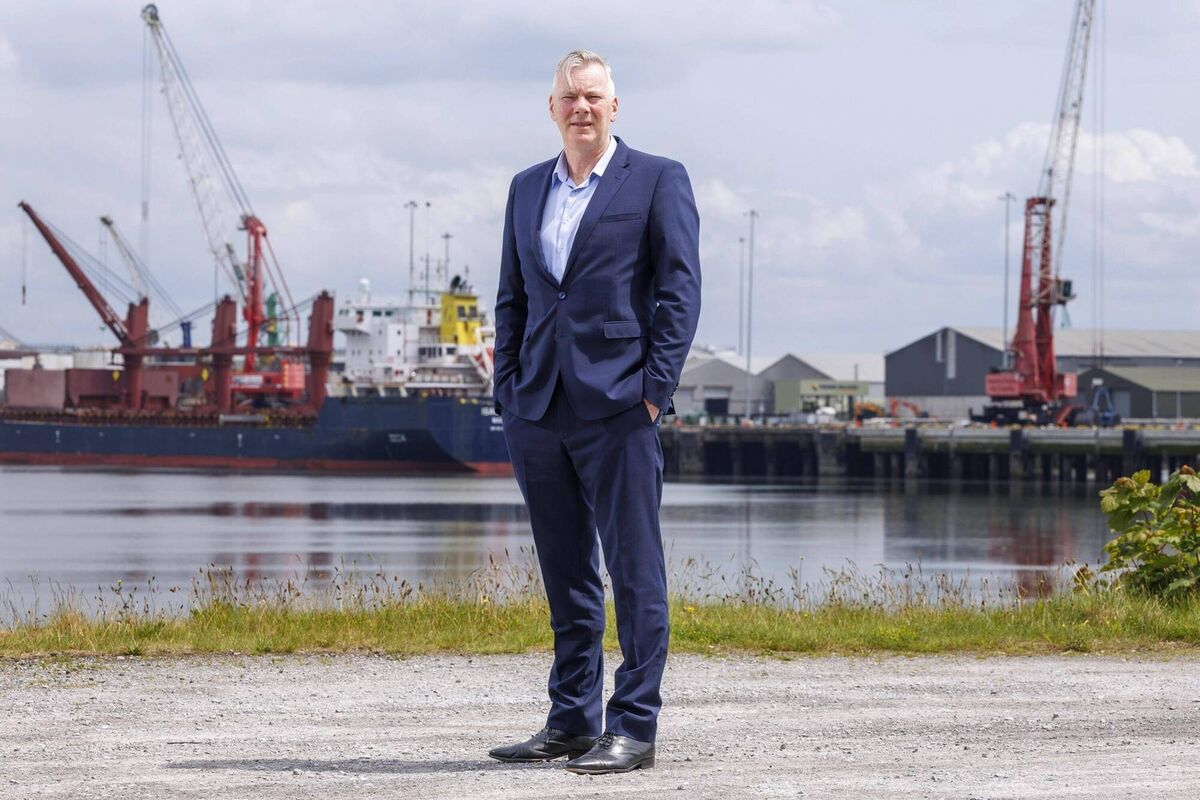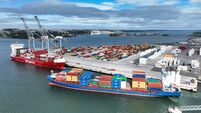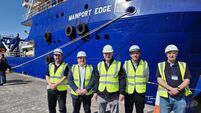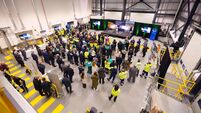Shannon Foynes boosts capacity with series of innovative projects

Shannon Foynes Port Company has made it its aim to stand at the forefront of Ireland’s growing renewables sector, both through its own resources and in conjunction with other agencies and stakeholders.
With a growing need for renewable energy to sustain Ireland’s modern and technology-driven economy, Shannon Foynes Port Company is on a mission to deliver.
As Ireland pushes to keep up with the potential gains from the AI revolution, the infrastructure to enable this technology has, for a long time, been a source of contention.
In Ireland, data centres consume more than a fifth of Ireland’s metered electricity, a far cry from just 5% a decade ago.
Now outpacing the amount of electricity used by homes, experts have raised concerns that the sudden surge in power demand driven by data centres could derail climate targets, both in Ireland and across Europe.
This has put a major strain on Ireland’s grid network, with many planning and energy bodies warning that the country’s electricity supply is under growing pressure.
As one of Europe’s largest and most influential tech hubs, hosting the European headquarters of giants Meta, Google, Amazon, and Apple, Ireland needs to find a way to operate data centres capable of powering the largest tech companies in the State in a way that is clean and sustainable.
The solution to this can be found in the Midwest of Ireland. Shannon Foynes Port Company has made it its aim to stand at the forefront of Ireland’s growing renewables sector, both through its own resources and in conjunction with other agencies and stakeholders.
The port is strategically placed to develop Ireland’s floating wind supply chain and is actively pursuing this opportunity, says chief executive officer Pat Keating.

Speaking to the Irish Examiner, the CEO said he sees potential for a large-scale wind farm at the port capable of hosting around 50 offshore turbines.
The port is currently awaiting the publication of the National Designated Maritime Area Plan (DMAP), which is scheduled to be released in December 2027.
The plan aims to strategically manage offshore renewable energy development, providing zoning for offshore wind, which will clear the way for prospective developers to plan for the ambitious project.
“Ireland is one of the few countries with the potential to develop and provide this sort of infrastructure at this scale,” said Mr Keating.
“AI is hugely energy-intensive, but we have the energy here at our doorstep to sustainably supply for those sorts of activities with infinite green energy.
“Looking at the direction the modern economy is going in, we here at Shannon Foynes have the potential to be at the front and centre of it.”
Mr Keating said that while Ireland remains a digitally advanced economy, this must be retained into the future, with new problems awaiting on the horizon.
“We are a very well-advanced economy, but we are under pressure. As we know, AI data centres are being built elsewhere and not in Ireland, which is a major risk to the economy. So, by breaking it down and looking at what needs to be done, Ireland’s ports are key to future developments. The scale and opportunity that we, the Shannon Foynes Port Company, can bring to those future plans is on another level.”
Stretching from Kerry to Loop Head to Limerick City, the Shannon Foynes Port is Ireland’s second-largest port operator, as well as the company’s biggest bulk port company, with jurisdiction spanning more than 500 sq m along the Shannon Estuary. It also has more than 1,400 hectares of land already zoned for industrial activities, which Mr Keating highlights as a “huge advantage”.
“Not only do we have the deep water port, which is near the offshore renewables, we also have the space to develop a cluster arrangement for either data centres, chip manufacturers or pharma, depending on what demand warrants. Whatever it is, we can accommodate them right beside where that power is going to land, alleviating pressure on the on-shore grid.”
With a capacity to handle over 10m tonnes annually, and with a water depth of up to 32km, Shannon Foynes is pushing to expand its cargo hub, serving both the domestic and international market, and to help alleviate pressure on Dublin, which currently risks running out of capacity in the next 12-13 years.
The turnover value of current trade handled by the port is €8.5bn per annum, with the associated economic impacts of €1.9bn per annum supporting over 3,900 jobs.
“There is so much opportunity here at Shannon Foynes that cannot be overlooked,” says Mr Keating.
“The Government is currently looking at the National DMAP. We need to see those timelines honoured so we can hit the ground running once zoning is approved for offshore renewables.”
In addition to this, the chief executive said a guaranteed timeline would ensure certainty for stakeholders, who must ensure the port has the right infrastructure and investment in place before offshore wind can be developed.
Currently, the port’s timeline for new infrastructure is 10-12 years, the majority of which is made up by pre-planning, with the last three or four years taken up by construction, the CEO says.
Speaking on what the port hopes to achieve itself, Shannon Foynes has plans to build a new, 800m jetty, costing around €600m, pre-planning for which is mostly completed, Mr Keating tells the Irish Examiner.
“We would hope to commence construction for the jetty before the end of this decade, based on the timelines we are currently operating on,” Mr Keating explains, adding that the new jetty will also be “dual-purpose.”
“Another big opportunity Shannon Foynes can offer is logistics. At the moment, about 84% of trade goes through Dublin Port. By 2040, they will be more or less, be at capacity.
“What we are doing with our new infrastructure is building a multi-purpose, multi-functional terminal that can add further port capacity to prevent the bottlenecks we are currently seeing when we look to 2040.
“Along with Cork, and the other ports across Ireland, we can offer solutions to that infrastructure capacity deficit, and I think the Government sees that,” Mr Keating says.
“There is a world of opportunity there, and we are ready to be at the forefront of it.”















